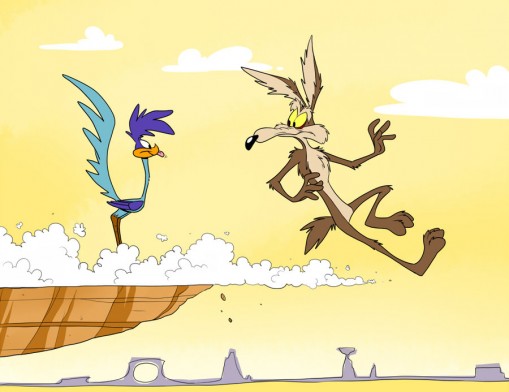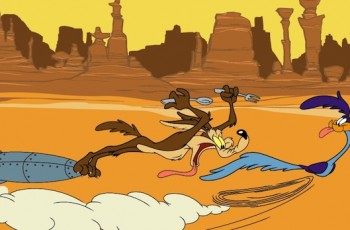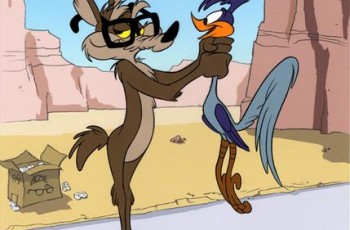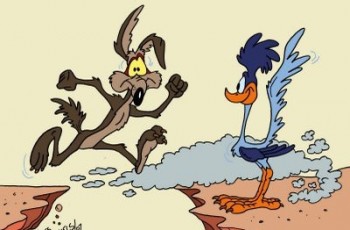Roadrunner and Wile E. Coyote
ACME Corp Cartoons
By: Kelly Chisum | Category: Other | Issue: July 2015

Wile E. Coyote runs off a cliff while chasing Roadrunner
The name Acme became popular for businesses by the 1920s, when alphabetized business telephone directories such as the Yellow Pages began to be widespread. There was a flood of businesses named Acme, including Acme Brick, Acme Markets, and Acme Boots. Early Sears catalogues even contained a number of products with the "Acme" trademark, including anvils, which are frequently used in Warner Bros. cartoons.[1]
Warner Brothers animator Chuck Jones has said the name Acme was chosen because of its prevalence:
Since we had to search out our own entertainment, we devised our own fairy stories. If you wanted a bow and arrow you got a stick. If you wanted to conduct an orchestra you got a stick. If you wanted a duel you used a stick. You couldn't go and buy one; that's where the terms acme came from. Whenever we played a game where we had a grocery store or something we called it the ACME corporation. Why? Because in the yellow pages if you looked, say, under drugstores, you'd find the first one would be Acme Drugs. Why? Because "AC" was about as high as you could go; it means the best; the superlative.
—Chuck Jones in a 2009 documentary[2]
The name Acme also had other connotations for people in Los Angeles at the time.

(L to R): Wile E. Coyote tries to eat Roadrunner.
Cartoon animation is drawn on paper and cels which have holes punched in them for registration. There were two standards: Acme and Oxberry. Oxberry was a British company and was seen on the American east coast while Acme was dominant on the west coast. The Acme film equipment company in California not only made the hole punches but the animation stands used by all the west coast animation studios, as well as lights, some cameras and other film gear. Animators working at Warner Brothers used Acme punched paper shot on Acme animation stands drew on Acme disks (light tables), so that having products come from Acme in cartoons was an inside joke that any animator would recognize.[citation needed]
The traffic lights in Los Angeles during the time the Warner Bros. cartoons were manufactured by the Acme Traffic Signal Co.. The traffic lights paired “Stop” and “Go” semaphore arms with small red and green lights. Bells played the role of today’s amber or yellow lights, ringing when the flags changed—a process that took five seconds.[3] The Acme semaphore traffic lights were often used in Warner Bros. Looney Tunes and Merrie Melodies cartoons for comedic effect due to their loud bell which was often followed by screeching tires and many sight gags.
It is a common misconception that Acme is an acronym standing for such things as "A Company that Makes Everything", "American Companies Make Everything" or "American Company that Manufactures Everything".

Wile E. Coyote catches Roadrunner.

Roadrunner outsmarts Wile E. Coyote.

About Author Kelly Chisum
Kelly is a graphic designer for Copper Cup Images. On the job, she loves helping businesses find their voice through branding and web design. In her spare time, Kelly enjoys running, painting, and remodeling her new home.
ACME Corp
For more information, contact:
Peter Pan
123-456-7890
eat0@eau0eav0eaw0
1 Start to the Right, Straight on till morning
Bartlesville, OK 74006
View Map
Mary Poppins
918-333-1234 | 918-331-4321
eat1@eau1eav1eaw1
123 Chim Chimney Dr | Bartlesville, OK 74003
View Map
![]()
![]()
ACME Corp Online:
More about ACME Corp:
Current Coupons/OffersSubscribe
For Free!



